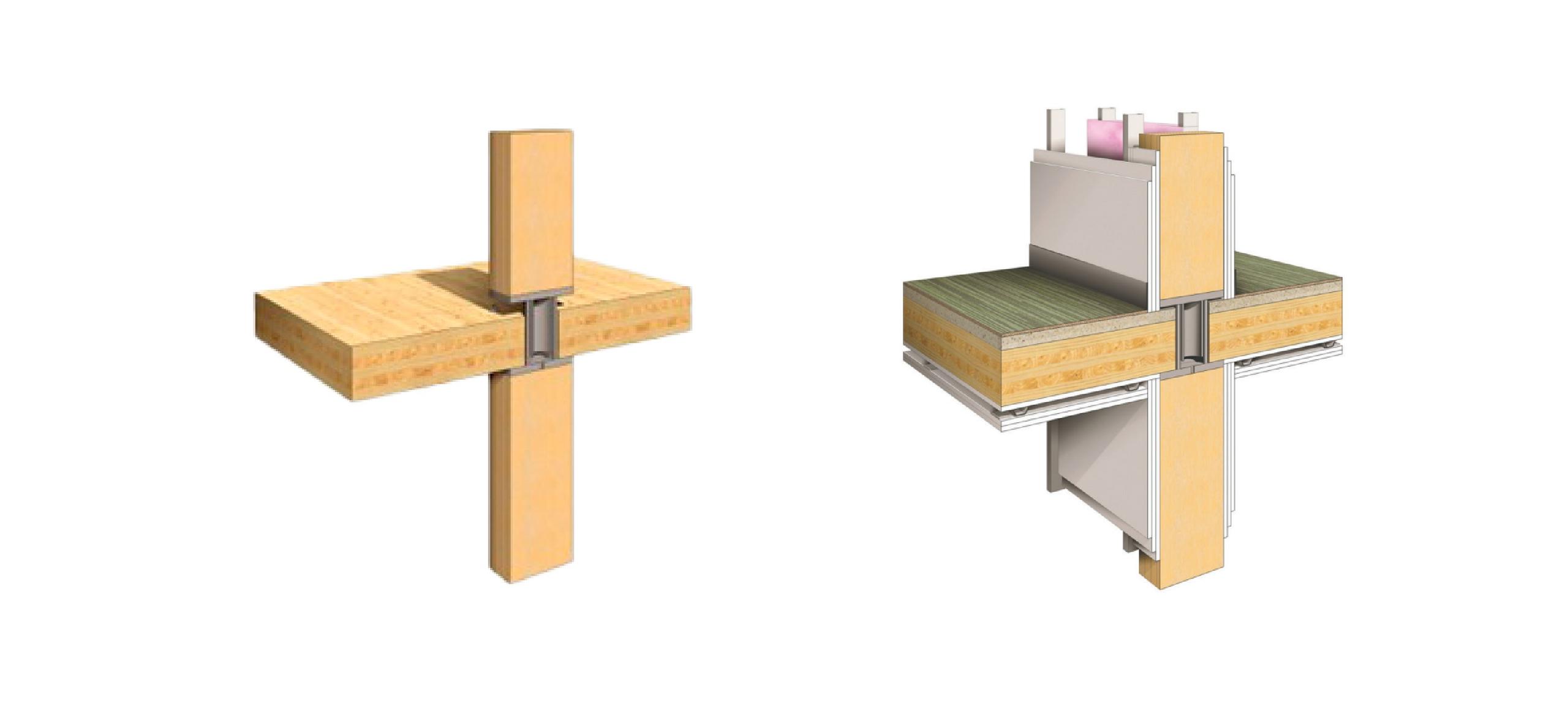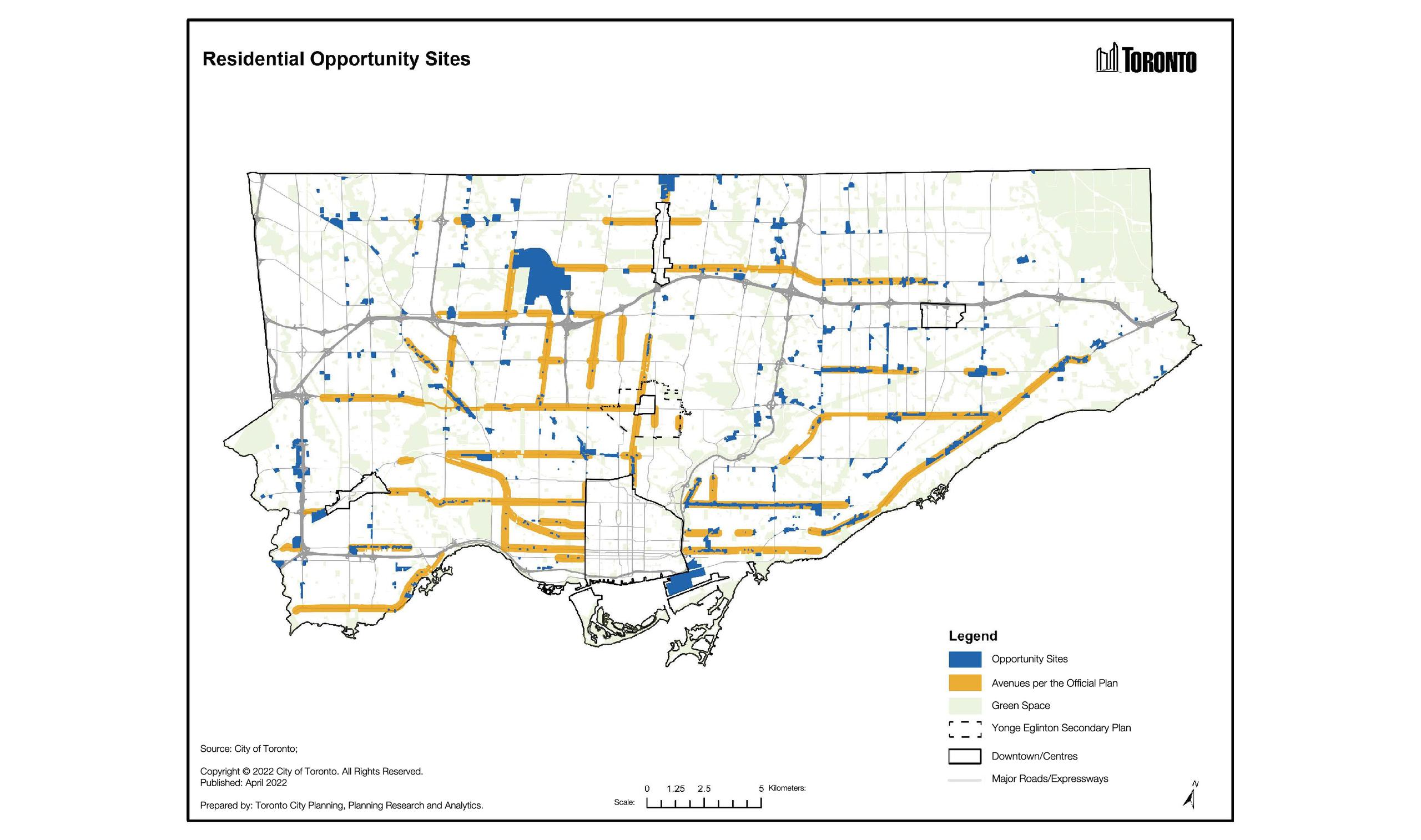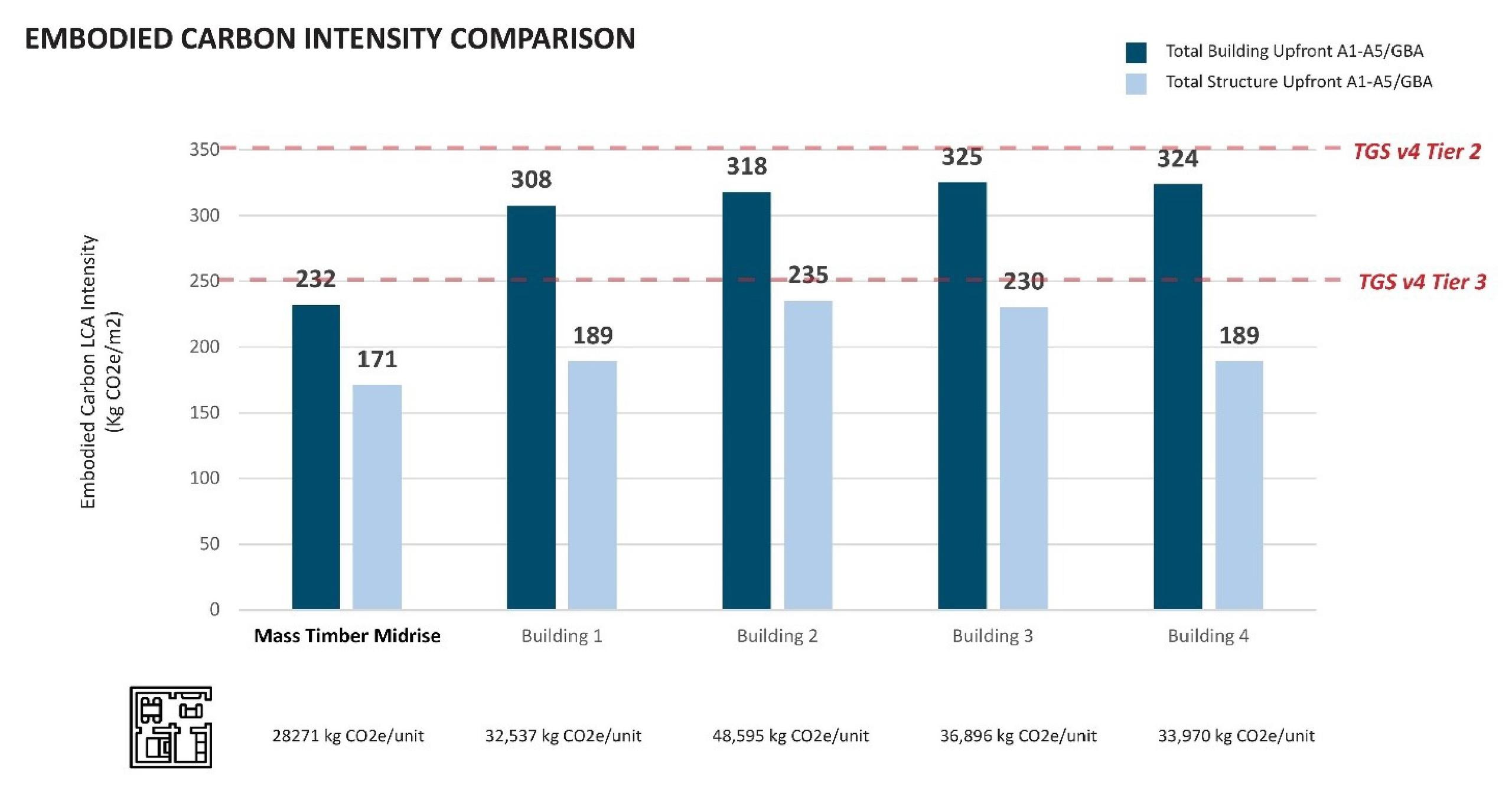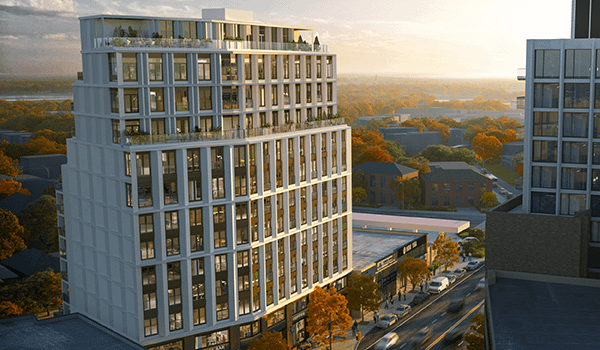As part of the ongoing efforts to combat the effects of climate change, the building and construction industry has emerged as a hub of innovation. At a local level, the Toronto Green Standards now impose stricter performance criteria, urging the development community to re-evaluate conventional methods and materials, examine their environmental impacts, and explore alternatives. One notable alternative is Encapsulated Mass Timber, a novel construction method recently introduced by the Ontario Building Code. This presents a compelling option, particularly within the residential sector.
Encapsulated Mass Timber Construction (EMTC)

Source: Canadian Wood Council and Acton Ostry Acrhitects; CS-BrockCommon.Study_.23.lr_.pdf (cwc.ca)
Encapsulated Mass Timber Construction (EMTC) requires an “Encapsulation Rating”, meaning timber surfaces are generally enclosed with two layers of fire-rated gypsum board. Although the timber may remain exposed within limits defined by the OBC, encapsulation serves as a supplementary measure, enhancing the inherent fire-resistive qualities of mass timber and providing an additional layer of protection. Under these new code provisions, residential structures are now permitted to employ encapsulated mass timber for buildings up to 12 storeys in height and with a floorplate area of 6,000 square metres. These parameters establish a practical framework, encouraging developers to consider integrating mass timber on all future midrise residential projects across Ontario.
What Sort of Opportunity Does This Present?
In Toronto specifically, the 2023 Land Needs Assessment for the City projects the potential for adding approximately 183,000 midrise units along the Avenues and in various key areas such as Downtown, Midtown, Centres, and other promising locations throughout Toronto.
 Source: Our Plan Toronto: Land Needs Assessment
Source: Our Plan Toronto: Land Needs Assessment
In addition to statistical forecasts, our colleagues at ASPECT Structural Engineers have provided insights into prevailing trends within the multi-unit residential sector. Adam Gerber, ASPECT’s Managing Principal, highlights that:
“As the supply chain continues to grow and mature, mass timber’s ability to economically address the midrise scale of buildings (with less dependence on on-site labour) creates a new opportunity for densification. Many forward-thinking clients are looking to mass timber to help provide high quality, sustainable, and economical housing solutions, and further, exponential growth can be expected. We see this already within our own client base, with dozens of mass timber residential projects in various stages of design and permitting in the GTA alone.”
This momentum may be in response to the opportunities afforded by the new code provisions; nonetheless, there are numerous other noteworthy advantages to selecting mass timber that merit careful consideration.
Benefits of Mass Timber Construction
| |
 |
|
- Prefabricated Mass Timber Can Be Installed Quickly –
When managed effectively, prefabricated mass timber can accelerate construction schedules, reducing the time and expense associated with formwork installation and removal, steel reinforcing, reshoring, and concrete curing between floors. This means we could be building more housing – faster.
- A Timber Structure Is Significantly Lighter – A lighter timber superstructure may lead to reduced requirements for concrete and steel reinforcing in structural foundations. Coupled with the removal of minimum parking requirements, this can shrink below grade structures, resulting in further compression of the construction schedule, cost savings and a lower carbon footprint.
- Mass Timber Construction Is Quiet – Timber construction, with its reduced use of concrete, steel, formwork, and on-site trades, minimizes disruptions to nearby residents. This becomes particularly significant when building adjacent to existing neighbourhoods.
- Mass Timber Has Undeniable Aesthetic Appeal – Exposed timber within living and common spaces offers developers an attractive marketing feature to entice potential purchasers or renters.
Considering Embodied Carbon
As an integral part of BDP Quadrangle’s Zero-Carbon Roadmap, we have initiated Whole Building Life Cycle Assessments (WBLCA’s) to understand the environmental impact of new projects. The broader goal of these assessments is to establish a comprehensive inventory of Life Cycle Assessment (LCA) data spanning multiple projects, enabling us to evaluate diverse methods and materials and to Make Embodied Carbon Part of the Decision-Making Process.
To illustrate this point, we conducted a preliminary LCA to quantify the embodied carbon impact of our project at 2453-2469 Bloor Street West, a mass timber midrise residential building recently submitted for preliminary municipal review. Our clients – Leader Lane Developments and Windmill Developments – strategically opted for a mass timber structure, aligning with their commitment to minimizing the project’s embodied carbon intensity.

In contrast to projects using conventional concrete and steel construction, known for their high carbon intensity in processing and refinement, mass timber stands out as a renewable building material with the ability to sequester carbon. Opting for a mass timber structure, our clients achieved an embodied carbon intensity of approximately 232 kgCO2e/m2, falling well below the voluntary targets introduced in Version 4 of the Toronto Green Standards.
Calling All Collaborators!

As the demand for increased density near transit nodes and within existing neighbourhood zones intensifies, we see mass timber midrise development as a significant opportunity to address both the housing crisis and the need to adopt lower carbon construction methods. To seize this opportunity, we aim to forge industry partnerships grounded in a shared commitment to improving the way we build on every new project. Our recent Structural Embodied Carbon Symposium serves as a prime example of how we can leverage the expertise of our peers in the pursuit of a common goal.
To our clients, collaborators and industry colleagues who share our enthusiasm for the potential of mass timber residential construction – we want to hear from you. Whether you’re considering mass timber for a new project, have an existing proposal suitable for mass timber, or are interested in exploring other innovations in low-carbon building strategies, please reach out to us!